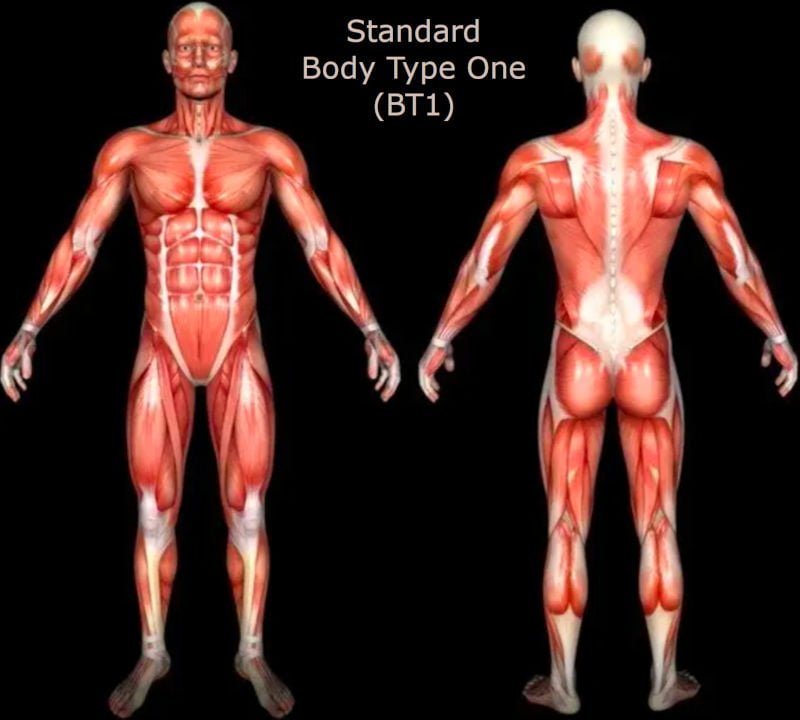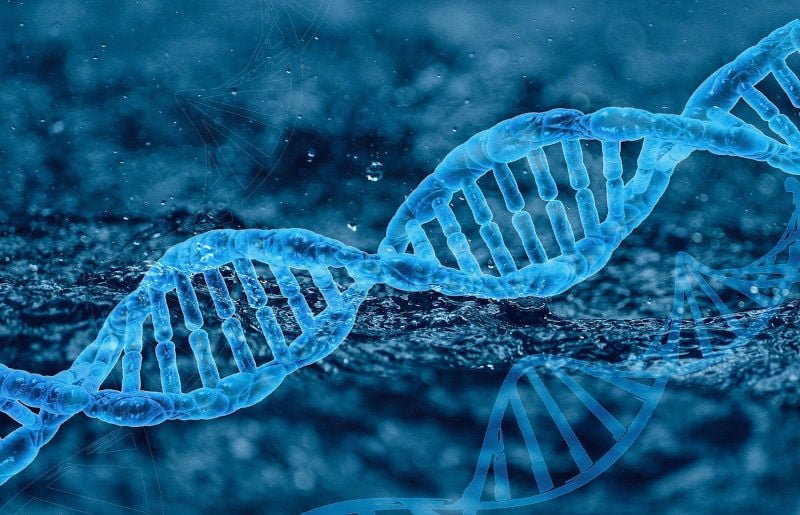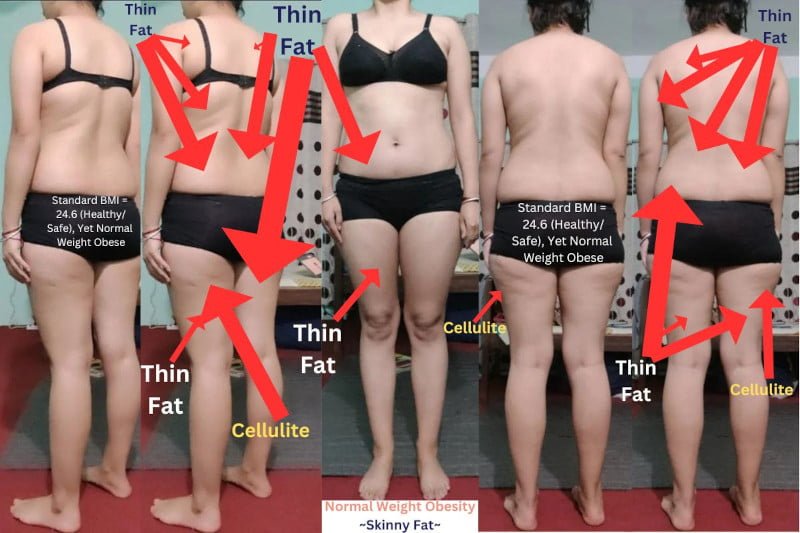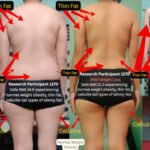How to Fix Skinny Fat

Now that we have scientifically answered what is skinny fat, the next logical question is how to fix skinny fat, scientifically. The first step is to scientifically determine and understand your unique genetic body composition. Are you experiencing genuine skinny fat tissue — cellulite and/or thin fat (1) — and, if so, where exactly on your body? (The Scientific Body Type Quiz (2) accurately determines your unique genetic body composition.)

Understanding your unique genetic body composition helps you keep body shape/figure/physique (body type) including regular white/yellow fat (body fat/adipose tissue) weight loss and added muscle mass expectations and goals realistic and achievable — and any body dysmorphia disorder (BDD)(3, 4, 5, 6, 7) or distorted/negative body image (3, 4, 5, 6, 7) in line. If you are genetically blessed with a genetic scientific Standard Body Type One/BT1 (8, 9, 10) with minimal to no skinny fat tissue, then all you have to do is safely lose the excess regular fat (or more) that is covering your genetic muscles and you are once again a Standard Body Type One.
You can also no less than add muscle mass to improve definition, bulk, and overall appearance.
How to Fix Skinny Fat – How Much Thin Fat and Cellulite Tissue Do You Have?
If you are experiencing enough skinny fat tissue (more than Standard BT1 (11) minimum), then how much determines (12, 13) if you are a genetic scientific Body Type Two (BT2)(14), Body Type Three (BT3)(15), or Body Type Four (BT4)(16). If you are a BT2, then it is more probable that with proper diet, exercise, and lifestyle you can recomposition your body (17) and fix your skinny fat to look like the BT1.
This is accomplished by safely losing (cutting)(18) any excess regular fat, no less, and then properly adding muscle mass (bulking)(19) where you have skinny fat tissue. Both can be done at the same time. The more skinny fat tissue that you are experiencing, like with a BT3 or BT4, the less likely it is that you can fully recomp your body and reduce your skinny fat enough to look like a Standard BT1.

You can experience skinny fat tissue at any BMI (21, 1). Underweight BMI (18.49 or less), overweight BMI (25 to 29.99), obese BMI (30+), and morbidly obese BMI (40+) people can experience five types (1) of skinny fat including thin fat, cellulite, loose skin, saggy skin, and crepey skin. Normal weight/healthy/safe Standard BMI (18.5 to 24.99) people can experience those same five types along with skinny fat type six (1), normal weight obesity. You can technically lose 100% of your regular fat tissue yet your skinny fat tissue will remain.
The Science of Body Recomposition – Genetics, DNA & Genes
What almost every fitness/exercise, weight loss, and diet/nutrition influencer and the like along with many medical professionals fail to tell you is, body recomposition is not permanent (22, 23, 24, 25, 26, 27, 28, 29, 30, 31) — like with Research Participant 378 (32). It is temporary. The internet, especially social media, is inundated with professionals and laypeople alike, making, at best, misleading claims that make it sound like you can permanently fix and get rid of your skinny fat with enough hard work.

It is a scientific/medical fact that your genes are inherited (33, 34, 35, 36, 37, 38) from your parents and cannot be permanently changed at this time. Body composition, skin color, eye color, hair color, height, breast size, genital size, facial features, etc. are inherited.
You cannot naturally, permanently change your hair, eye, or skin color any more than you can change your height, breast size, genital size, facial features, body composition, or the like.
Genetics are Permanent
Genetics determines all of it. You can choose surgery, contact lenses, hair dye, etc. to unnaturally change things as you want. But, at this time, you cannot  inherently, naturally, permanently change your unique DNA (39, 40, 41, 42), or genes — segments of your DNA that give you physical characteristics that make you unique — which are responsible for building and maintaining your unique human structure; including genetic body composition.
inherently, naturally, permanently change your unique DNA (39, 40, 41, 42), or genes — segments of your DNA that give you physical characteristics that make you unique — which are responsible for building and maintaining your unique human structure; including genetic body composition.
You can temporarily change your body composition including muscle mass, regular fat (visceral and subcutaneous)(43), and skinny fat (subcutaneous)(43) with diet, exercise, and lifestyle. And, with enough consistent hard work for the rest of your life, you may be able to maintain those changes. But they are not permanent.
Epigenetics
Some people point to epigenetics (44, 45, 46, 47, 48), a field of study that focuses on how genes respond to environmental influences (diet, exercise, lifestyle) and the reading of DNA sequences.
However, unlike gene mutations (49, 50, 51) that are permanent, there is no scientific evidence presently that indicates that epigenetics — like body recomposition — causes permanent changes in the underlying DNA sequence. Instead, non-genetic factors (diet (18), exercise (58), and lifestyle (65)) cause the organism’s genes to temporarily behave or “express themselves” differently (body recomp), but are reversible.
The Genetics of Added Muscle Mass – How to Fix Skinny Fat
Like every other human being on the planet, you will gradually begin to lose any added muscle mass that you build above and beyond your original default genetic body composition, if/when you stop (22, 23, 24, 25, 26, 27, 28, 29, 30, 31) the exercise(s) that built the  added muscle mass. For some people, added muscle mass loss can start in as little as two weeks. Three to four weeks is more typical.
added muscle mass. For some people, added muscle mass loss can start in as little as two weeks. Three to four weeks is more typical.
The more skinny fat tissue that you have, the less likely it is you can successfully add the muscle mass you want to that area of your body. Muscle tissue cannot (52, 53, 54) turn into any kind of fat tissue, or vice versa.
Anyone who claims that they can turn skinny fat tissue into muscle tissue, or that muscle tissue turned into skinny fat tissue, needs to provide the scientific data, evidence, and facts to back up their claim. At present, there is no FDA-approved (55, 56, 57) way because there is zero/no scientific evidence to back up such claims.
Fact from Fiction

The thing is, as mentioned, it is possible for someone with skinny fat to add enough muscle mass to look like a Standard BT1. In that moment, the influencer screams, “see, I told you so!”. As if they permanently fixed, got rid of, and cured that person’s skinny fat. But, there is no/zero science to back up this claim either.
Let’s see that person, and anyone like them, 10 years from now when life takes over and they no longer have the time or motivation to maintain the added muscle mass. And they are back at their original default genetic body composition including skinny fat. Like Research Participant 378 (32). The skinny fat never went away or goes away, it was and is only reduced (you cannot permanently get rid of or cure any type of skinny fat at this time).
You Can Reduce/Fix Skinny Fat Three Ways
1 – Diet (18) & Exercise (58): safely and sustainably lose regular white/yellow fat (adipose tissue/body fat).
2 – Resistance Exercise (19): add muscle mass via weight lifting (gold standard), calisthenics, Pilates, yoga, and/or isometrics (which one works best for you depends on how much skinny fat/lack of genetic muscle you are experiencing, no less).
3 – Pay for a few FDA-approved methods (59) including Endermologie, CoolSculpting, Cellfina, QWO, and surgery.
Start by scientifically understanding your unique genetic body composition (2) along with the current health of your metabolism (60), diet (61), exercise (62), and lifestyle (63). The Scientific Health Quizzes accurately calculate your unique metrics using the latest wrangled science in proprietary algorithms. Free options are available.
What is the Best Skinny Fat Diet According to Science?
References
- Skinny Fat Science: What Is Skinny Fat? https://skinnyfat.fellowone.com/what-is-skinny-fat/
- Fellow One Research, Scientific Health Quizzes: Scientific Body Type Quiz (Official). https://scientificbodytypequiz.fellowone.com/product/scientific-body-type-quiz-official/
- WebMD: What Is Body Dysmorphia?, October 16, 2024, Allison Torres Burtka (Medically Reviewed by Zilpah Sheikh, MD). https://www.webmd.com/mental-health/mental-health-body-dysmorphic-disorder
- Discovery, Mood & Anxiety Program: Understanding the Difference Between Body Dysmorphia, Self-Esteem, and Negative Body Image, Admin. https://discoverymood.com/blog/understanding-difference-body-dysmorphia-self-esteem-negative-body-image/
- Mayo Clinic: Body dysmorphic disorder, December 12, 2022, Mayo Clinic Staff. https://www.mayoclinic.org/diseases-conditions/body-dysmorphic-disorder/symptoms-causes/syc-20353938
- NIH, National Library of Medicine: Is There Any Relationship Between Body Image Perception, Eating Disorders, and Muscle Dysmorphic Disorders in Male Bodybuilders?, July 13, 2018, Aslı Devrim, Pelin Bilgic, and Nobuko Hongu. https://pmc.ncbi.nlm.nih.gov/articles/PMC6142149/
- NIH, National Library of Medicine: DSM-IV to DSM-5 Body Dysmorphic Disorder Comparison, https://www.ncbi.nlm.nih.gov/books/NBK519712/table/ch3.t19/
- Britannica: human muscle system, September 9, 2024, Shane W. Cummings and Robin Huw Crompton (Fact-checked by the Editors of Encyclopaedia Britannica). https://www.britannica.com/science/human-muscle-system
- innerbody: The Muscular System, July 25th, 2024 (last updated), Tim Taylor. https://www.innerbody.com/image/musfov.html
- KevinMD: Why body type standards are wrong in measuring health, November 4, 2022, Marc Nelson. https://www.kevinmd.com/2022/11/why-body-type-standards-are-wrong-in-measuring-health.html
- Fellow One Research: Body Type One (BT1). https://www.fellowone.com/category/fellow-one-research/the-four-body-types/body-type-science/body-type-quiz/research-data/body-type-one-bt1/
- Fellow One Research: Body Type Science Research Data, https://www.fellowone.com/category/fellow-one-research/the-four-body-types/body-type-science/body-type-quiz/research-data/
- Fellow One Research: The Four Body Types. https://www.fellowone.com/fellow-one-research/the-four-body-types/
- Fellow One Research: Body Type Two (BT2). https://www.fellowone.com/category/fellow-one-research/the-four-body-types/body-type-science/body-type-quiz/research-data/body-type-two-bt2/
- Fellow One Research: Body Type Three (BT3). https://www.fellowone.com/category/fellow-one-research/the-four-body-types/body-type-science/body-type-quiz/research-data/body-type-three-bt3/
- Fellow One Research: Body Type Four (BT4). https://www.fellowone.com/category/fellow-one-research/the-four-body-types/body-type-science/body-type-quiz/research-data/body-type-four-bt4/
- Cleveland Clinic: What To Know About Body Recomposition, April 16, 2024. https://health.clevelandclinic.org/body-recomposition
- Skinny Fat Science: The Best Skinny Fat Diet, According to Science. July 29, 2024. https://skinnyfat.fellowone.com/the-best-skinny-fat-diet-according-to-science/
- Skinny Fact Science: Best Skinny Fat Resistance Exercises, September 4, 2024. https://skinnyfat.fellowone.com/best-skinny-fat-resistance-exercises/
- Fellow One Research: Body Type Test (Quiz) Results 1170 – Body Type Three (BT3) Female (Woman), Generation Z, February 2022. https://www.fellowone.com/fellow-one-research/the-four-body-types/body-type-quiz/body-type-test-quiz-results-1170-body-type-three-bt3-female-woman-generation-z/
- NIH, National Heart, Lung, and Blood Institute: Calculate Your Body Mass Index. https://www.nhlbi.nih.gov/health/educational/lose_wt/BMI/bmicalc.htm
- Healthline: Exercise Break: How Long Does It Take to Lose Muscle Mass?, November 1, 2018, Lindsay Ross-Hazel. https://www.healthline.com/health/how-long-does-it-take-to-lose-muscle-mass
- Muscle and Fitness: How Long Does It Take to Start Losing Muscle After You Stop Working Out?, Mark Lelinwalla. https://www.muscleandfitness.com/athletes-celebrities/news/how-long-does-it-take-start-losing-muscle-after-you-stop-working-out/
- Eat This, Not That!: Here’s How Fast You’ll Lose Muscle If You Stop Exercising, May 31, 2024, Jarrod Nobbe, MA, CSCS (Fact-checked by Alexa Mellardo). https://www.eatthis.com/how-fast-you-lose-muscle-from-exercise-break/
- NIH, National Library of Medicine: Factors That Influence Body Weight, https://www.ncbi.nlm.nih.gov/books/NBK221834/
- UC Berkeley, Retirement Center: Muscle Mass Can Decline 25% In As Little As 2 Weeks … But We Can Get It Back!, July 2022, Cary Sweeney. https://retirement.berkeley.edu/publications/muscle-mass-can-decline-25-little-2-weeks-we-can-get-it-back
- Global News: If you stop exercising, here’s how quickly you’ll lose strength, July 20, 2019, Laura Hensley. https://globalnews.ca/news/5653575/how-long-does-it-take-to-lose-muscle-mass/
- Shape: How Long Does It Take to Lose Muscle?, July 28, 2022, Megan Falk. https://www.shape.com/fitness/workouts/strength-training/how-long-does-it-take-to-lose-muscle
- NIH, National Library of Medicine: Substantial skeletal muscle loss occurs during only 5 days of disuse, March 2014, B T Wall, M L Dirks, T Snijders, J M G Senden, J Dolmans, and L J C van Loon. https://pubmed.ncbi.nlm.nih.gov/24168489/
- MVPT Physical Therapy: How Long It Takes to Build and Lose Muscle, https://mvpt-physicaltherapy.com/how-long-it-takes-to-build-and-lose-muscle/
- Harvard Health Publishing: Don’t let muscle mass go to waste, April 10, 2023, Matthew Solan (Reviewed by Howard E. LeWine, MD, Chief Medical Editor). https://www.health.harvard.edu/staying-healthy/dont-let-muscle-mass-go-to-waste
- Fellow One Research: Research Participant 378 – Body Type Two (BT2) Male (Man), Millennial (Generation Y). https://www.fellowone.com/fellow-one-research/the-four-body-types/body-type-quiz/research-participant-378-body-type-two-bt2-male-man-millennial-generation-y/
- ScienceDirect, Nutrition: Genetic aspects of body composition, Volume 15, Issues 7–8, July–August 1999, Pages 609-613, John B Owen BSC, PHD, MA. https://www.sciencedirect.com/science/article/abs/pii/S0899900799000970
- Cleveland Clinic: DNA, Genes & Chromosomes, May 20, 2022. https://my.clevelandclinic.org/health/body/23064-dna-genes–chromosomes
- NIH, National Library of Medicine: Heredity, Genes, and DNA, The Cell: A Molecular Approach. 2nd edition. https://www.ncbi.nlm.nih.gov/books/NBK9944/
- NBC News: Destined to inherit your mom’s body?, February 8, 2010, By Margaret Renkl (Women’s Health). https://www.nbcnews.com/id/wbna35254750
- National Human Genome Research Institute: Inherited, October 8, 2024, Benjamin E. Berkman, J.D., M.P.H. Deputy Director Bioethics Core. https://www.genome.gov/genetics-glossary/Inherited
- NIH, National Library of Medicine: The heritability of body composition, May 8, 2021, Avivit Brener, Yarden Waksman, Talya Rosenfeld, Sigal Levy, Itai Peleg, Adi Raviv, Hagar Interator, and Yael Lebenthal. https://pmc.ncbi.nlm.nih.gov/articles/PMC8105919/
- MedicalNewsToday: Is it possible for a person to change their genetics?, December 23, 2024, Peter Morales-Brown (Medically reviewed by Mia Armstrong, MD). https://www.medicalnewstoday.com/articles/can-you-change-your-genetics
- NIH, National Library of Medicine: The Structure and Function of DNA, Molecular Biology of the Cell. 4th edition. https://www.ncbi.nlm.nih.gov/books/NBK26821/
- Healthline: DNA Explained and Explored, February 11, 2022 (last updated), Jill Seladi-Schulman, Ph.D. (reviewed by Stacy Sampson, D.O.). https://www.healthline.com/health/what-is-dna
- MedicalNewsToday: What is DNA and how does it impact health?, December 1, 2023, Tim Newman (Medically reviewed by Megan Soliman, MD). https://www.medicalnewstoday.com/articles/319818
- Skinny Fat Science: Are Regular Fat and Skinny Fat the Same Thing?, August 29, 2024. https://skinnyfat.fellowone.com/are-regular-fat-and-skinny-fat-the-same-thing/
- Wikipedia: Epigenetics. https://en.wikipedia.org/wiki/Epigenetics
- Centers for Disease Control and Prevention: Epigenetics, Health, and Disease, May 15, 2024. https://www.cdc.gov/genomics-and-health/about/epigenetic-impacts-on-health.html
- MedlinePlus: What is epigenetics? https://medlineplus.gov/genetics/understanding/howgeneswork/epigenome/
- NIH, National Library of Medicine: Epigenetics: The Science of Change, March 2006, Bob Weinhold. https://www.ncbi.nlm.nih.gov/pmc/articles/PMC1392256/
- National Human Genome Research Institute: Epigenetics, October 8, 2024. Belen Hurle, Ph.D. Former Associate Investigator Division of Intramural Research. https://www.genome.gov/genetics-glossary/Epigenetics
- Cleveland Clinic: Genetic Mutations in Humans, May 24, 2022. https://my.clevelandclinic.org/health/body/23095-genetic-mutations-in-humans
- MedlinePlus: What is a gene variant and how do variants occur? https://medlineplus.gov/genetics/understanding/mutationsanddisorders/genemutation/#:~:text=Inherited%20(or%20hereditary)%20variants%20are%20passed%20from,cells%2C%20which%20are%20also%20called%20germ%20cells.
- NIH, National Library of Medicine: The Maintenance of DNA Sequences, https://www.ncbi.nlm.nih.gov/books/NBK26881/
- NIH, National Library of Medicine: Muscle-to-fat interaction: a two-way street?, January 1, 2010, Bente K Pedersen. https://pmc.ncbi.nlm.nih.gov/articles/PMC2821541/
- Healthline: Does Fat Turn into Muscle? What to Know, March 2, 2021, Katey Davidson, MScFN, RD, CPT (Medically reviewed by Jake Tipane, CPT). https://www.healthline.com/nutrition/does-fat-turn-into-muscle
- The New York Times: The Claim: Muscle Turns to Fat When You Stop Working Out, July 26, 2006, Anahad O’Connor. https://www.nytimes.com/2005/07/26/health/nutrition/the-claim-muscle-turns-to-fat-when-you-stop-working-out.html
- Food and Drug Administration: Non-Invasive Body Contouring Technologies, December 07, 2022. https://www.fda.gov/medical-devices/aesthetic-cosmetic-devices/non-invasive-body-contouring-technologies
- NIH, National Library of Medicine: Cellulite: Current Understanding and Treatment, June 21, 2023, Allen Gabriel, MD, FACS, Vivian Chan, PA-C, Marissa Caldarella, PA-C, Tanya Wayne, PA-C, and Erin O’Rorke, MD. https://www.ncbi.nlm.nih.gov/pmc/articles/PMC10324940/
- Cleveland Clinic: Cellulite. October 28, 2021. https://my.clevelandclinic.org/health/diseases/17694-cellulite
- Skinny Fat Science: The Best Skinny Fat Exercise, According to Science, August 2, 2024. https://skinnyfat.fellowone.com/the-best-skinny-fat-exercise-according-to-science/
- Fellow One Research: Cellulite. https://www.fellowone.com/category/fellow-one-research/cellulite/
- Fellow One Research, Scientific Health Quizzes: Scientific Metabolism Quiz Health Score. https://scientificbodytypequiz.fellowone.com/product/scientific-metabolism-quiz-health-score/
- Fellow One Research, Scientific Health Quizzes: Scientific Diet Quiz Health Score. https://scientificbodytypequiz.fellowone.com/product/scientific-diet-quiz-health-score/
- Fellow One Research, Scientific Health Quizzes: Scientific Exercise Quiz Health Score. https://scientificbodytypequiz.fellowone.com/product/scientific-exercise-quiz-health-score/
- Fellow One Research, Scientific Health Quizzes: Scientific Lifestyle Quiz Health Score. https://scientificbodytypequiz.fellowone.com/product/scientific-lifestyle-quiz-health-score/
- Skinny Fat Science: The Best Skinny Fat Lifestyle, According to Science, August 14, 2024. https://skinnyfat.fellowone.com/the-best-skinny-fat-lifestyle-according-to-science/












